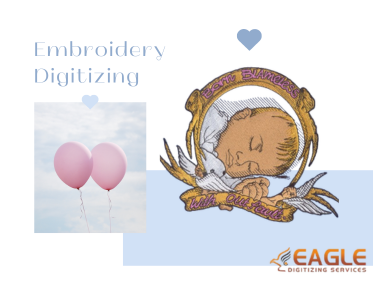From Pixels to Print: Understanding Vector Color Separation
Ever wondered how your digital masterpiece transitions from pixels on a screen to vibrant prints? The journey from digital pixels to tangible prints is a fascinating one, guided by the meticulous process of vector color separation. Join us as we explore the intricacies of this process, unlocking the secrets behind stunning printed imagery.
Understanding Color Separation
Definition
of color separation
Color separation is an artful technique that dissects a full-color image into its constituent color components, each destined for individual printing plates. By isolating colors like a skilled surgeon separating strands of DNA, printers achieve precision in color reproduction, layering one hue atop another until the final image emerges in all its chromatic splendor.
Importance
of accurate color separation
The importance of precise color separation cannot be overstated. Just as a conductor orchestrates each instrument to harmonize in a symphony, accurate color separation orchestrates the hues to blend seamlessly on the printed page. It ensures that the vibrant red of a rose petal or the verdant green of a leaf remains faithful to the artist's vision, captivating viewers with its authenticity.
Types
of color separation methods
In the realm of color separation, a myriad of methods exists, each tailored to specific printing requirements and artistic visions. From the classic simplicity of spot color separation to the nuanced complexities of simulated process color separation, printers wield an array of techniques like a painter selects brushes, choosing the perfect tool to bring their masterpiece to life.
Basics of Vector Graphics
Definition
of vector graphics
Vector graphics, the unsung heroes of the digital art world, are born from the language of mathematics, where points, lines, and curves intersect to form elegant shapes and intricate patterns. Unlike their raster counterparts, which rely on a grid of pixels, vector graphics possess a magical quality: they scale infinitely without sacrificing clarity, rendering them indispensable for designers seeking perfection in every pixel.
Advantages
of vector graphics over raster images
The allure of vector graphics lies in their versatility and fidelity. Whether scaled to the size of a postage stamp or a billboard, vector images retain their crispness and clarity, unfazed by the constraints of resolution. Their compact file sizes dance lightly across digital landscapes, unburdened by the heavy pixels that weigh down their raster counterparts.
Common
vector graphic file formats
In the vast expanse of digital realms, vector graphics parade in an array of formats, each bearing its own standard and significance. From the ubiquitous SVG, fluttering like a flag of universal compatibility, to the venerable AI and EPS, stalwarts of the Adobe empire, designers wield these formats like keys to unlock the gates of creativity, traversing seamlessly between platforms and programs.
Role of Color Spaces
Explanation
of color spaces
Color spaces, the palette of the printing world, define the boundaries of perceivable color within a given medium. Like the hues of a painter's palette, color spaces delineate the spectrum of possibilities, guiding printers and designers alike in their quest for chromatic perfection.
Commonly
used color spaces in printing
Among the pantheon of color spaces, CMYK reigns supreme in the realm of printing, its four pillars—cyan, magenta, yellow, and black—forming the foundation upon which vibrant imagery is built. Through the alchemy of ink and substrate, CMYK breathes life into the printed page, imbuing it with richness and depth.
Importance
of choosing the right color space
Selecting the appropriate color space is akin to choosing the perfect lens for a camera: it shapes the perspective and defines the outcome. Whether navigating the digital landscape of RGB or traversing the print realm of CMYK, designers must choose wisely, for the right color space ensures that their creations shine with brilliance and fidelity.
Process of Vector Color Separation
Preparing
the vector artwork
Before embarking on the journey of color separation, designers must prepare their vector artwork like a chef prepping ingredients for a gourmet feast. They trim excess layers, cleanse artifacts of imperfection, and ensure that every line and curve is poised for perfection on the printed canvas.
Determining
the number of colors
Like a sommelier selecting the perfect vintage, printers analyze the artwork to discern the optimal palette of colors for separation. They balance complexity with practicality, selecting hues that evoke emotion and capture the essence of the design.
Assigning
colors to separate layers
With the precision of a surgeon, printers assign each color to its own layer, meticulously separating hues like strands of DNA. These layers serve as the building blocks of the separation process, allowing for individual manipulation and refinement to achieve the desired result.
Tools and Software for Vector Color Separation
Overview
of software options
In the digital atelier of color separation, an array of software options awaits, each offering its own palette of features and capabilities. From the venerable Adobe Illustrator to the avant-garde CorelDRAW, designers navigate this landscape like explorers charting new territories, seeking the perfect tool to bring their vision to life.
Features
to look for in vector color separation software
Within the labyrinth of software options, designers seek features that elevate their craft to new heights. They crave precision tools for color separation, robust color management capabilities, and seamless integration with industry standards, ensuring that their creations are limited only by their imagination.
Popular
tools used in the industry
Among the titans of color separation software, certain tools emerge as industry favorites, revered for their reliability and innovation. Whether harnessing the power of specialized plugins or custom scripts, designers wield these tools like extensions of their own creativity, pushing the boundaries of what is possible in print.
Techniques for Achieving Accurate Color Separation
Color
matching and calibration
In the pursuit of color perfection, printers engage in a delicate dance of calibration and color matching, ensuring that every hue is faithfully reproduced on the printed page. Through meticulous adjustment of printers and monitors, they harmonize the digital and physical worlds, bridging the gap between vision and reality.
Importance
of color proofs
Color proofs serve as the vanguard of print quality, offering a glimpse into the future before the presses roll. Like a dress rehearsal for a grand performance, they allow designers to fine-tune their creations, ensuring that every color shines with brilliance and clarity.
Adjusting
for different printing techniques
As printers navigate the varied terrain of printing techniques, they adapt their color separation strategies to suit the demands of each process. Whether screen printing or offset lithography, they tailor their approach with precision, ensuring that every print is a masterpiece of color and clarity.
Challenges in Vector Color Separation
Dealing
with complex artwork
Complex artwork poses a formidable challenge in the realm of color separation, testing the limits of printers' skill and patience. From intricate patterns to overlapping colors, every detail demands attention, requiring printers to navigate the labyrinth of complexity with grace and precision.
Ensuring
consistency across different print runs
Consistency is the hallmark of quality in print production, yet achieving it across multiple print runs is no small feat. Printers engage in rigorous testing and quality control measures, ensuring that every print is a faithful reproduction of the original, regardless of time or quantity.
Addressing
color limitations of certain printing methods
Despite advances in printing technology, certain methods still pose limitations on color reproduction. Printers must navigate these constraints with creativity and ingenuity, adjusting their color separation techniques to achieve the best possible result within the confines of the medium.
Best Practices for Vector Color Separation
Organizing
artwork layers effectively
Effective organization is the cornerstone of efficient color separation, enabling printers to navigate complex artwork with ease. By structuring layers logically and labeling them clearly, designers streamline the separation process, ensuring that every color finds its rightful place on the printed canvas.
Maintaining
high-resolution files
High-resolution artwork is the lifeblood of print production, ensuring that every detail is captured with clarity and precision. Designers guard their files like treasures, preserving them in pristine condition to guarantee stunning results on the printed page.
Collaborating
with printers for optimal results
Effective collaboration between designers and printers is essential for achieving optimal results in color separation. By fostering open communication and sharing expertise, they navigate the complexities of print production together, ensuring that every project is a testament to their shared vision and dedication.
Conclusion
Navigating the intricacies of vector color separation is essential for achieving stunning printed materials that
faithfully capture the essence of digital designs. By understanding the
principles, techniques, and challenges involved, designers can embark on a
journey from pixels to print with confidence and precision and unlock the full
potential of their creativity, bringing vibrant, lifelike imagery to life on
the printed page.



